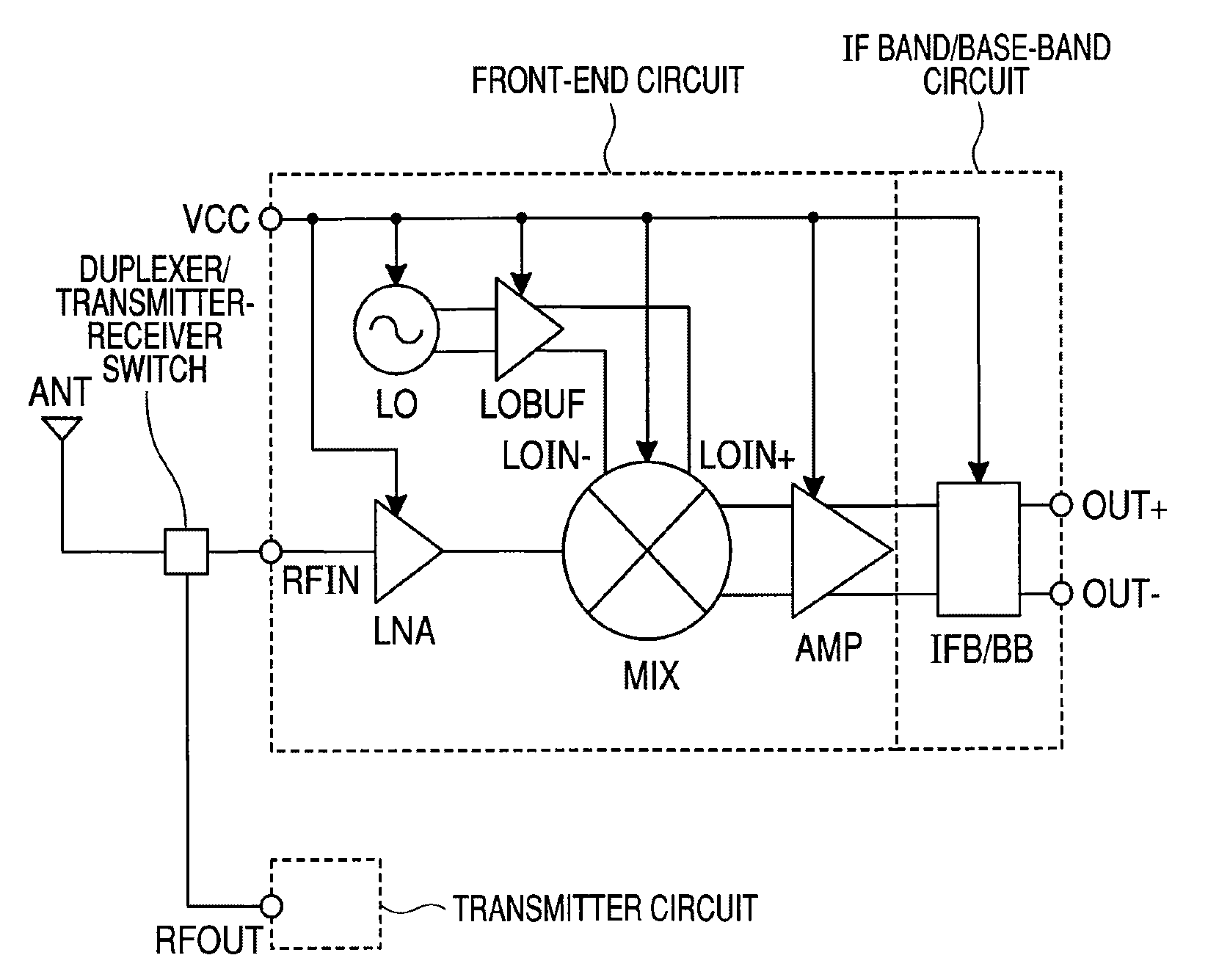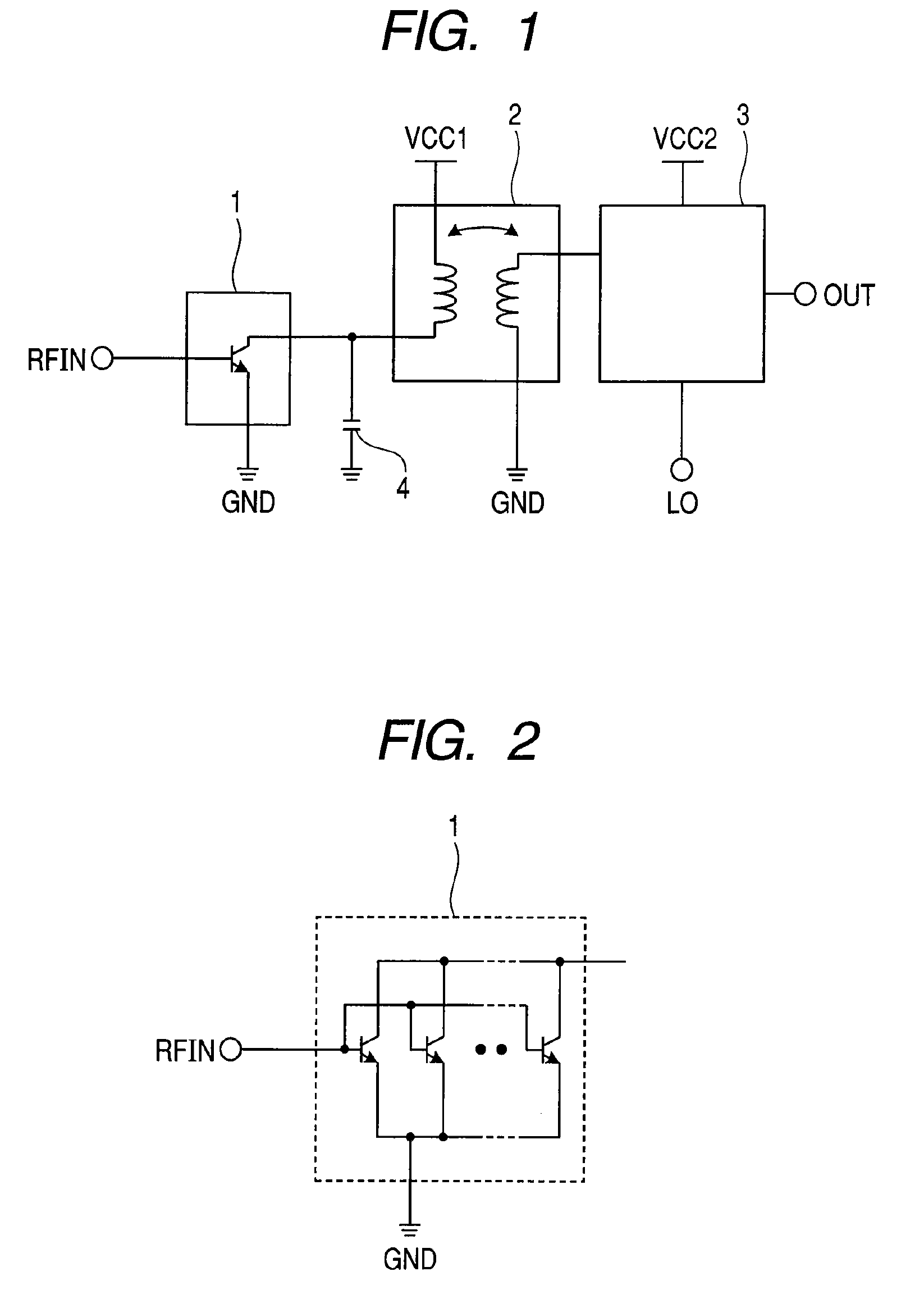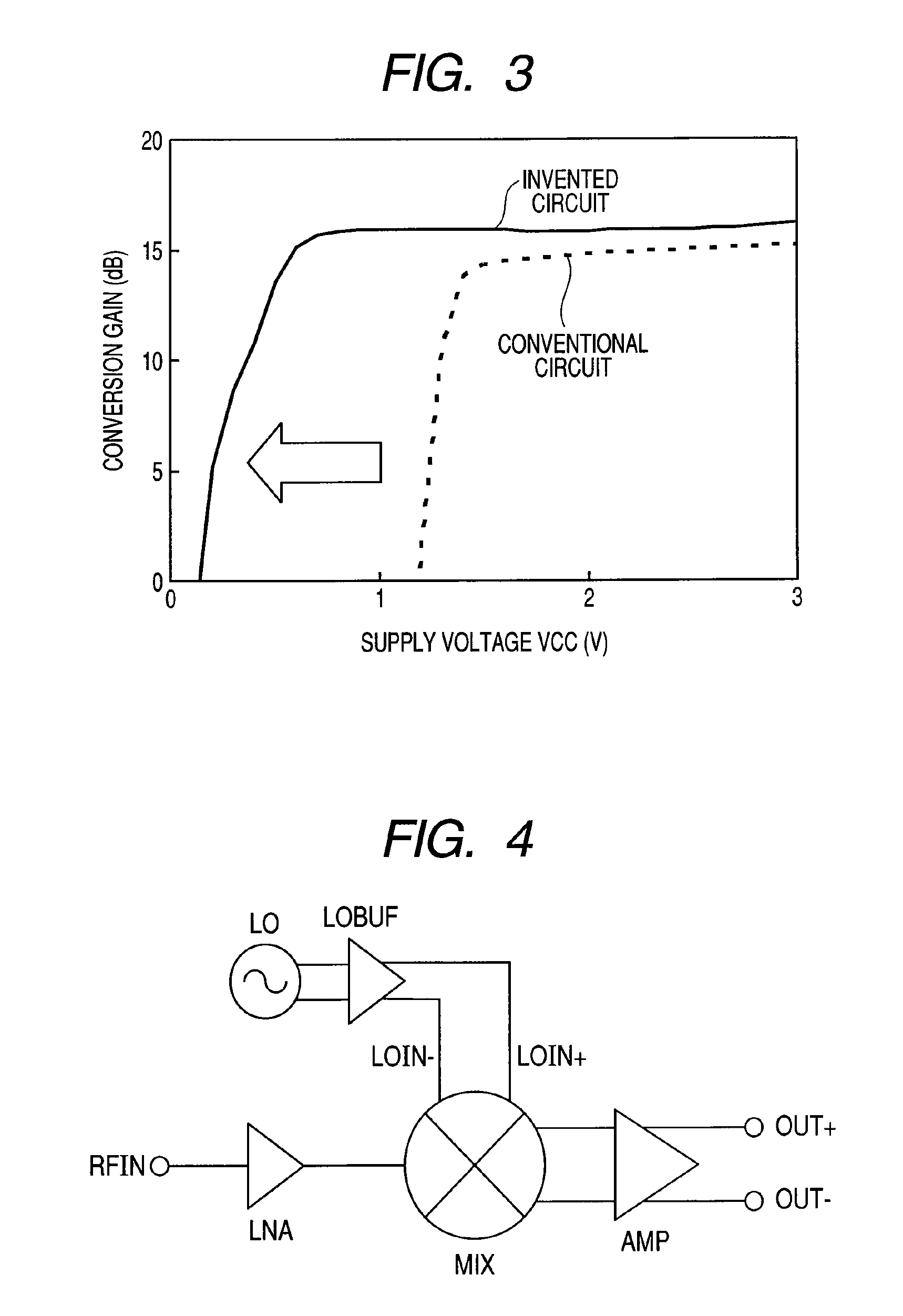Active mixer circuit and a receiver circuit or a millimeter-wave communication unit using it
a technology of active mixer and receiver circuit, which is applied in the field of active mixer circuit and receiver circuit or millimeter-wave communication unit using it, can solve the problems of reducing the s/n ratio and high supply voltage, and achieves low noise, high frequency, and low power consumption.
- Summary
- Abstract
- Description
- Claims
- Application Information
AI Technical Summary
Benefits of technology
Problems solved by technology
Method used
Image
Examples
first embodiment
[0042]First, an active mixer circuit according to a first embodiment of the present invention will be described.
[0043]FIG. 1 is a diagram showing a block configuration of an active mixer circuit provided in a semiconductor integrated circuit according to one embodiment of the present invention. A transconductance amplifier 1 configuring a voltage-to-current converter receives a radio frequency signal RFIN from an input terminal RFIN, and converts voltage amplitude of the input signal into current amplitude and amplifies it. The converted input signal is input to one terminal (input terminal) of primary winding of a transformer 2. Further, supply voltage of the transconductance amplifier 1 is supplied from supply voltage VCC1 that is provided to the other terminal of the primary winding of the transformer 2, and direct bias current is supplied through the transformer 2 from the VCC1 and flows to a ground terminal of the transconductance amplifier 1.
[0044]One terminal of secondary win...
second embodiment
[0052]Hereinafter, a configuration example of a wireless communication receiver circuit as a semiconductor integrated circuit according to a second embodiment of the present invention will be described. FIG. 4 is a diagram showing a block configuration example of a wireless communication receiver circuit configured using the mixer circuit according to one embodiment of the present invention.
[0053]In FIG. 4, the wireless communication receiver circuit includes a low-noise amplifier LNA, a mixer circuit MIX, a local oscillator LO, a first differential amplifier LOBUF, and a second differential amplifier AMP. The low-noise amplifier LNA is supplied with an input signal RFIN of a first frequency that is received in an antenna of a receiver in a wireless system. An output node of the low-noise amplifier is connected to a first input node of the mixer circuit. A first output node of the local oscillator LO that oscillates and outputs a second frequency is connected to a first input node o...
third embodiment
[0056]Hereinafter, FIG. 5 is a view showing a block configuration of a mixer circuit provided in a semiconductor integrated circuit according to a third embodiment of the present invention. Unlike the embodiment of FIG. 1, the primary winding of a transformer 12 is a single-ended input and the secondary winding thereof is a differential output. One end of the primary winding is input with the single-ended signal and the other end thereof is connected to supply voltage VCC1. One end of the secondary winding of the transformer 12 outputs a differential positive phase signal, the other end thereof outputs a differential negative phase signals, and an intermediate node thereof is ground.
[0057]In other words, the transformer 12 includes the primary winding and the secondary winding having the intermediate node, wherein one end (first node) of the primary winding is connected to the input terminal of the single-ended signal of the transformer and the other end (second node) of the primary...
PUM
 Login to View More
Login to View More Abstract
Description
Claims
Application Information
 Login to View More
Login to View More - R&D
- Intellectual Property
- Life Sciences
- Materials
- Tech Scout
- Unparalleled Data Quality
- Higher Quality Content
- 60% Fewer Hallucinations
Browse by: Latest US Patents, China's latest patents, Technical Efficacy Thesaurus, Application Domain, Technology Topic, Popular Technical Reports.
© 2025 PatSnap. All rights reserved.Legal|Privacy policy|Modern Slavery Act Transparency Statement|Sitemap|About US| Contact US: help@patsnap.com



